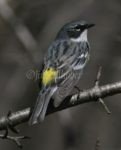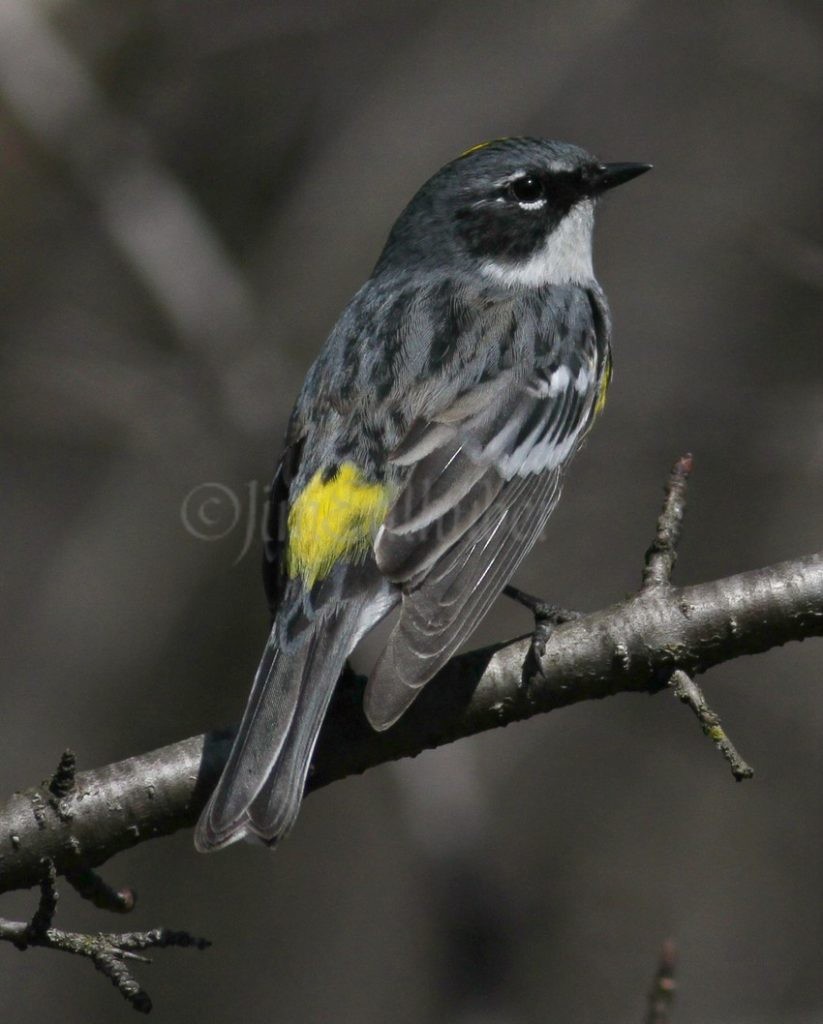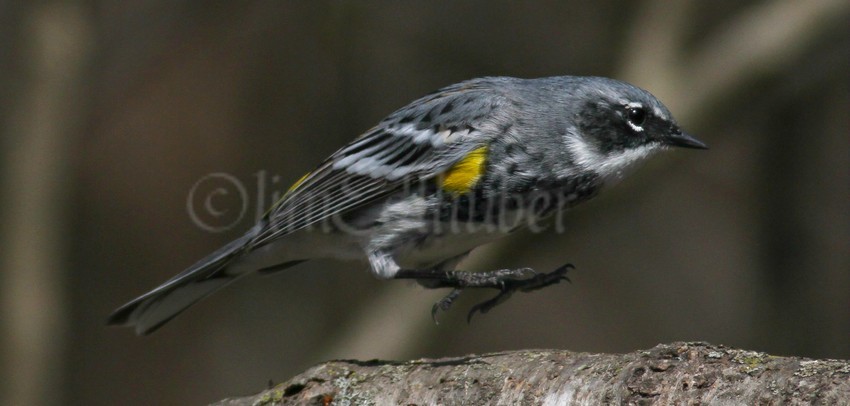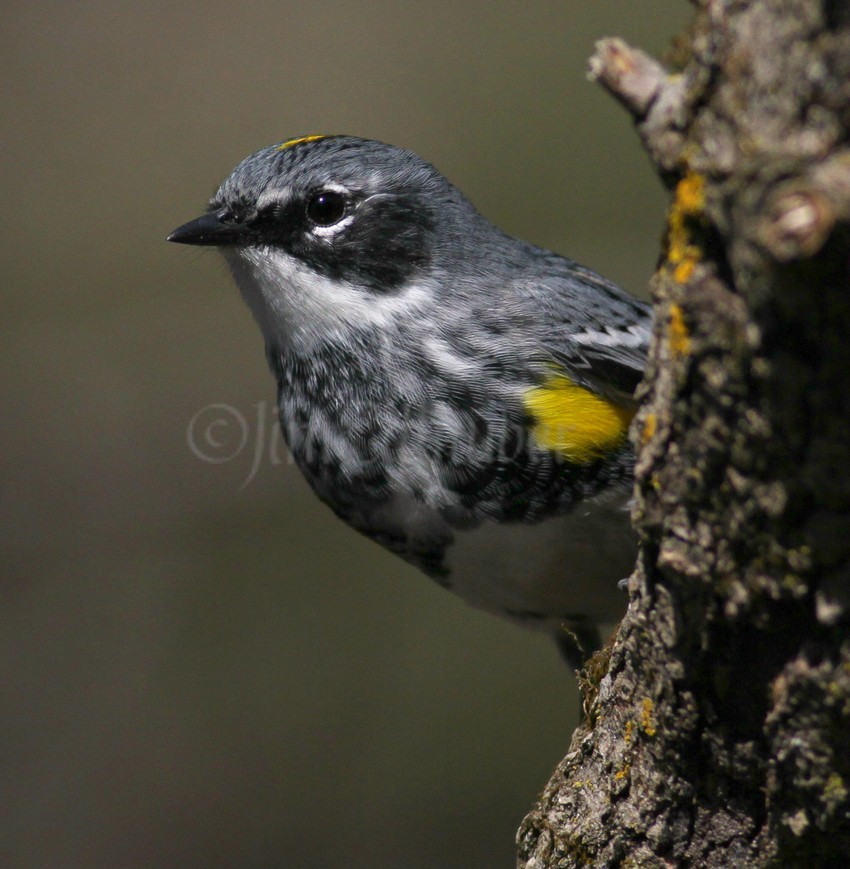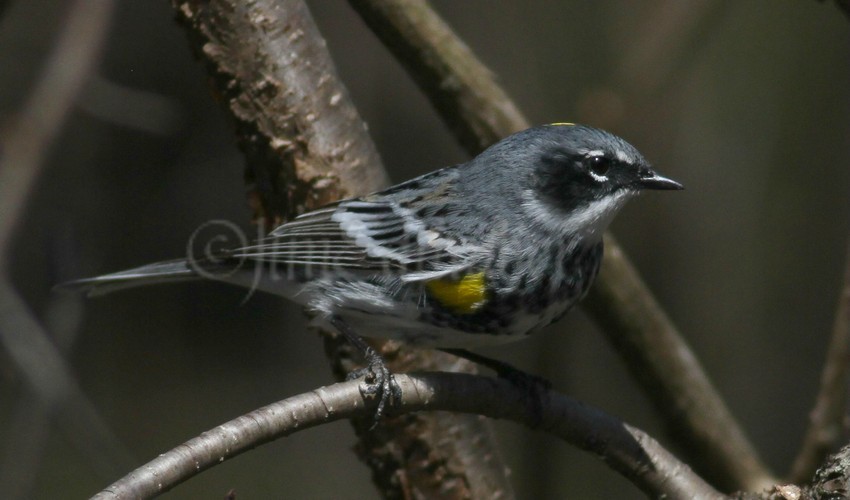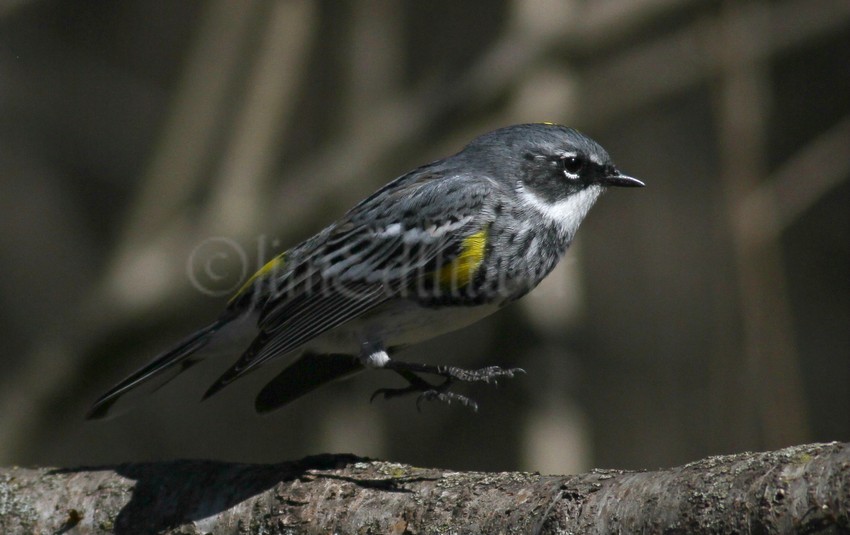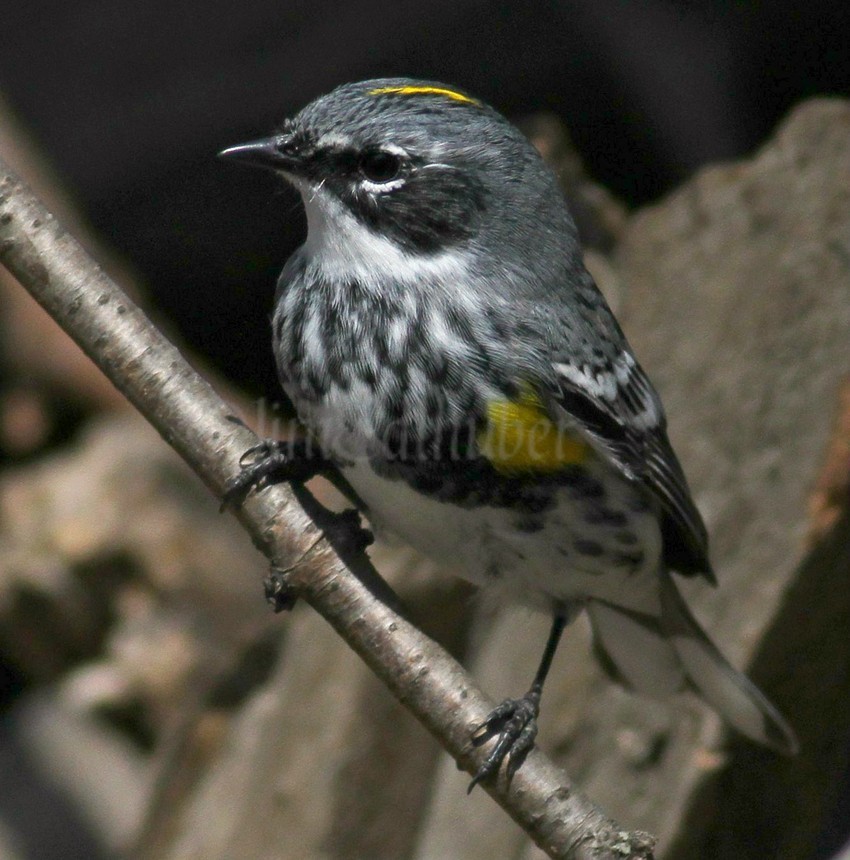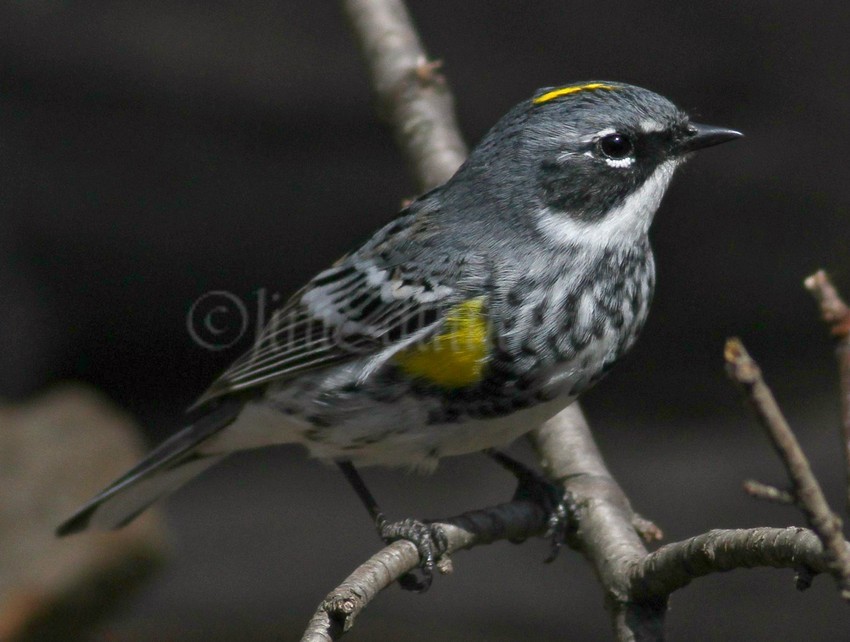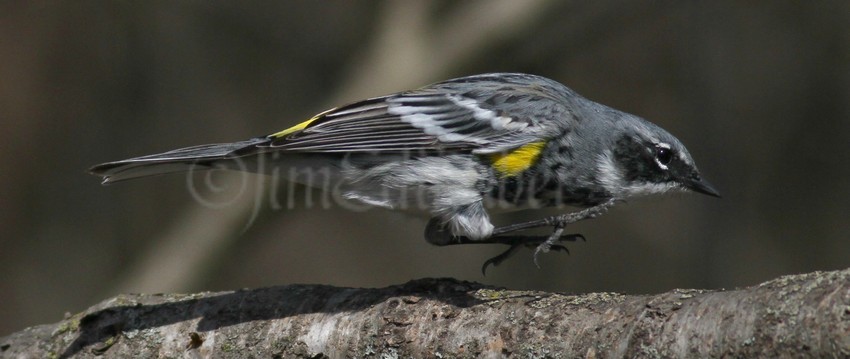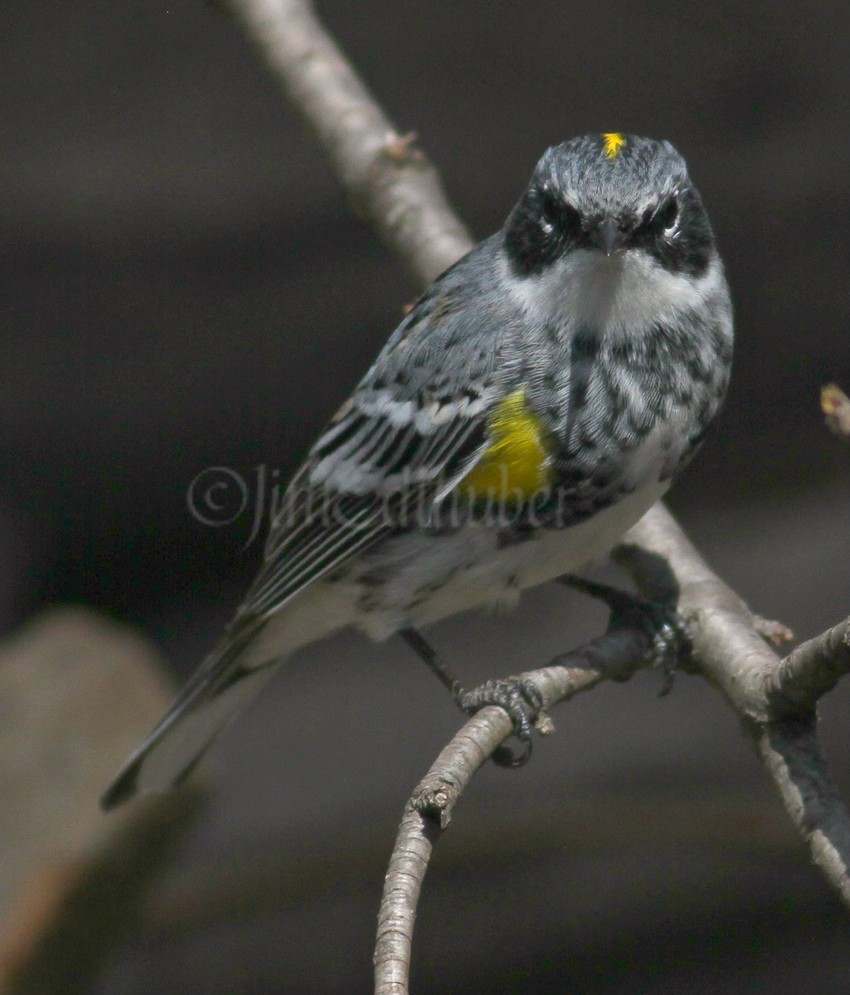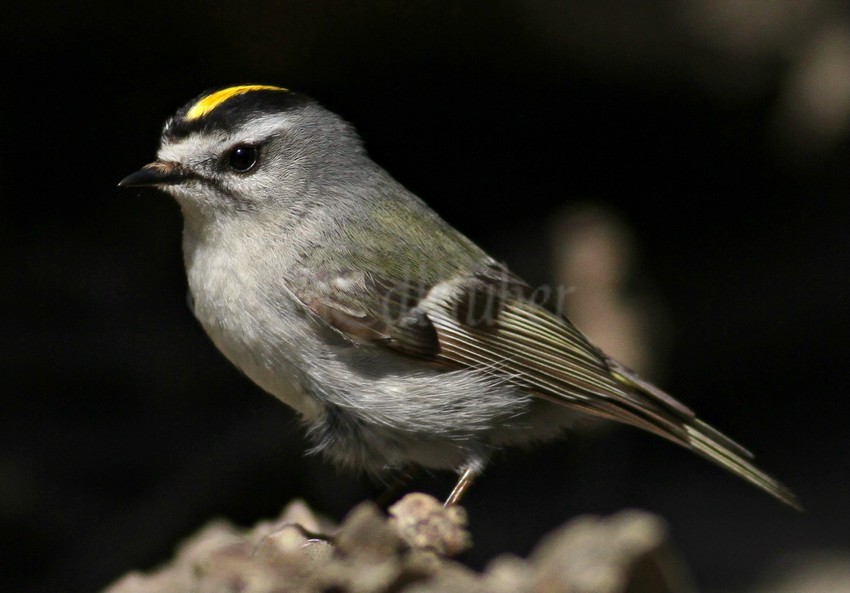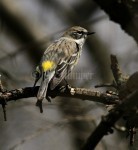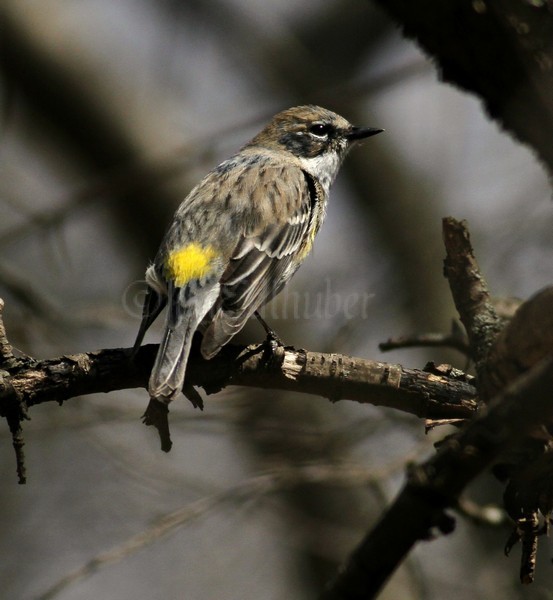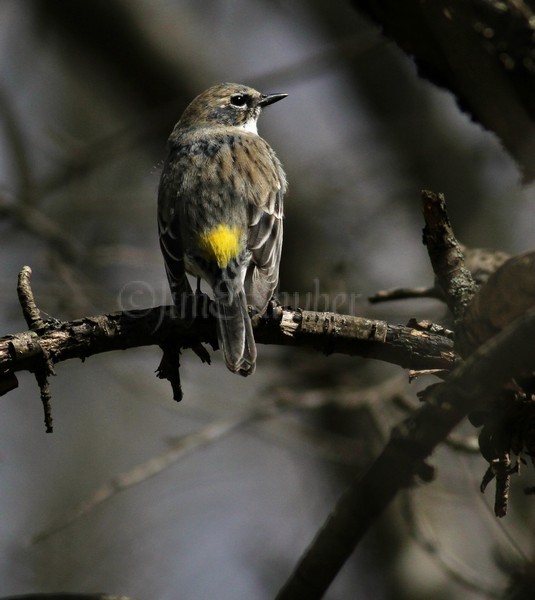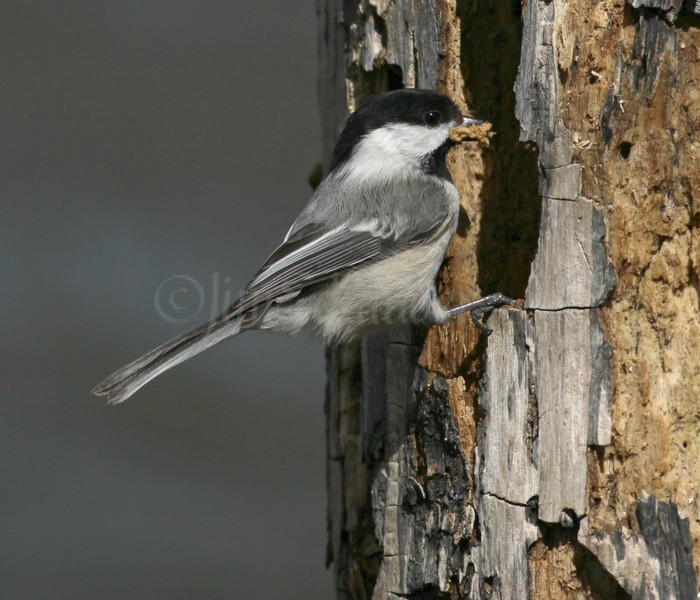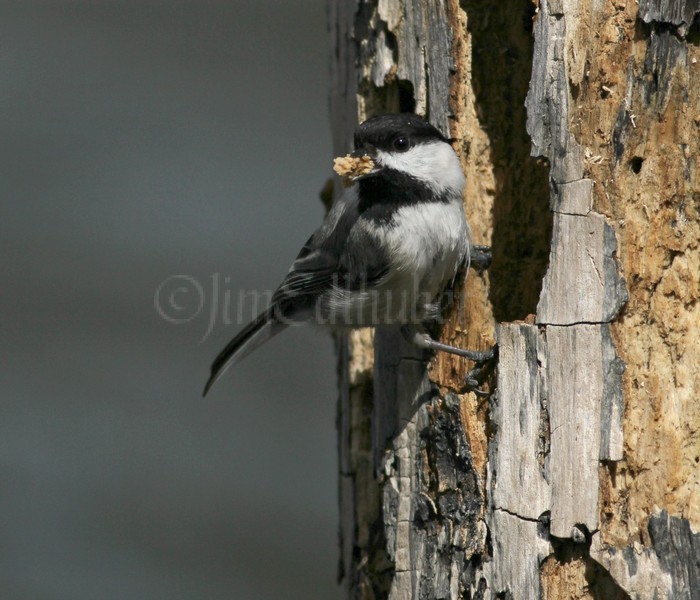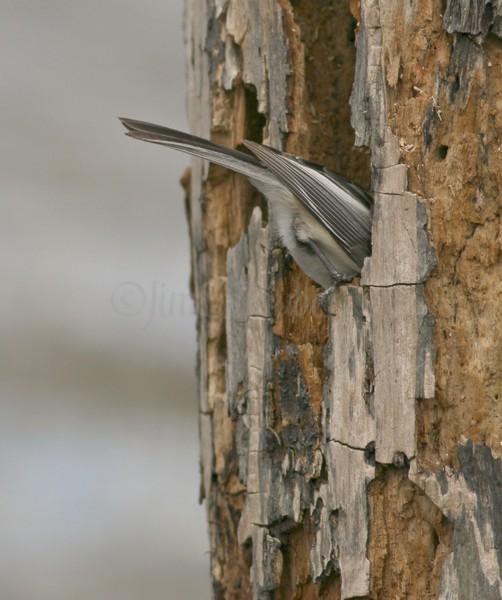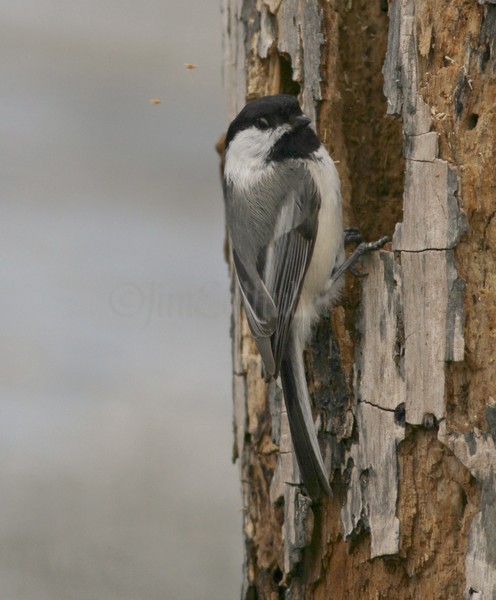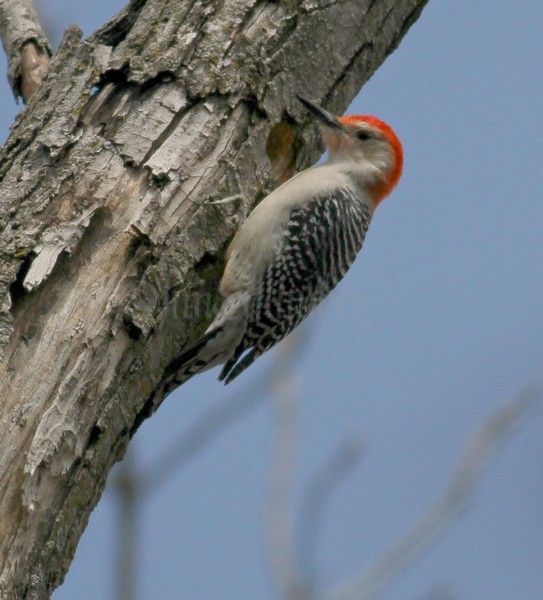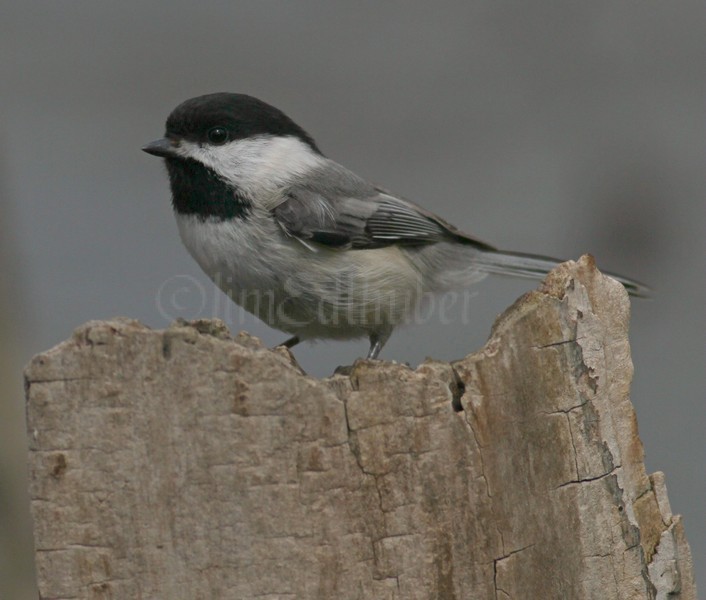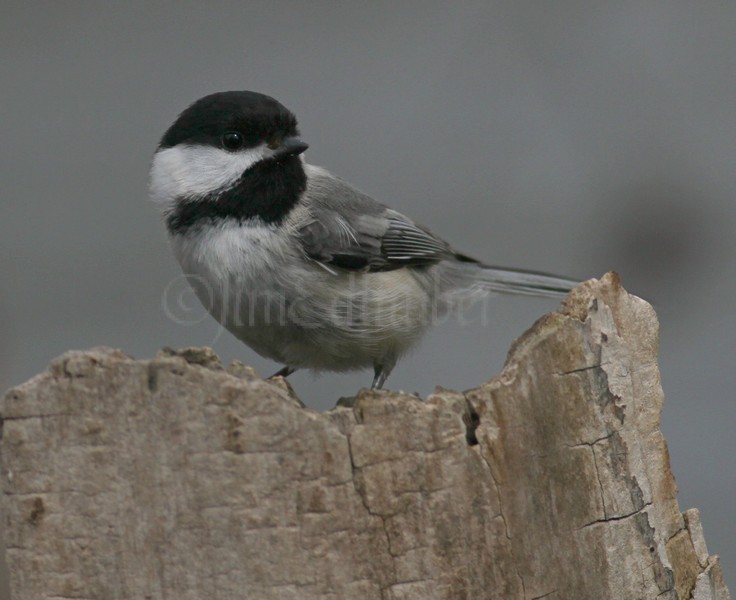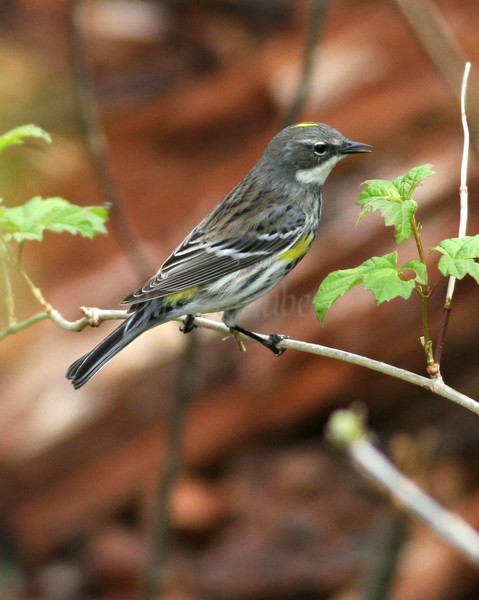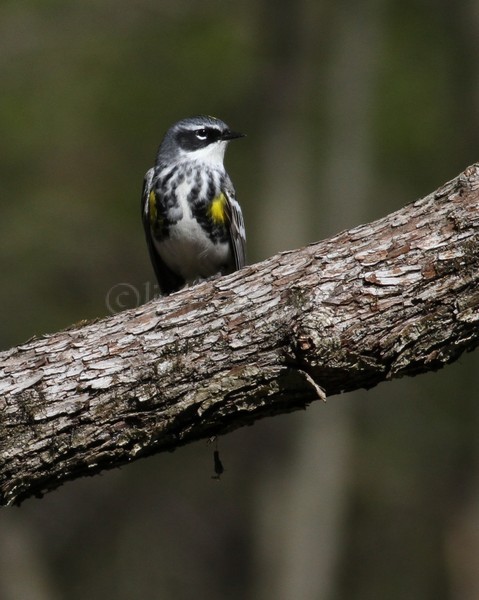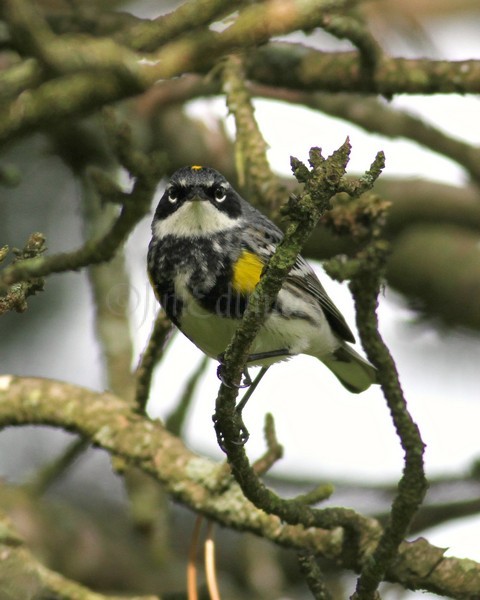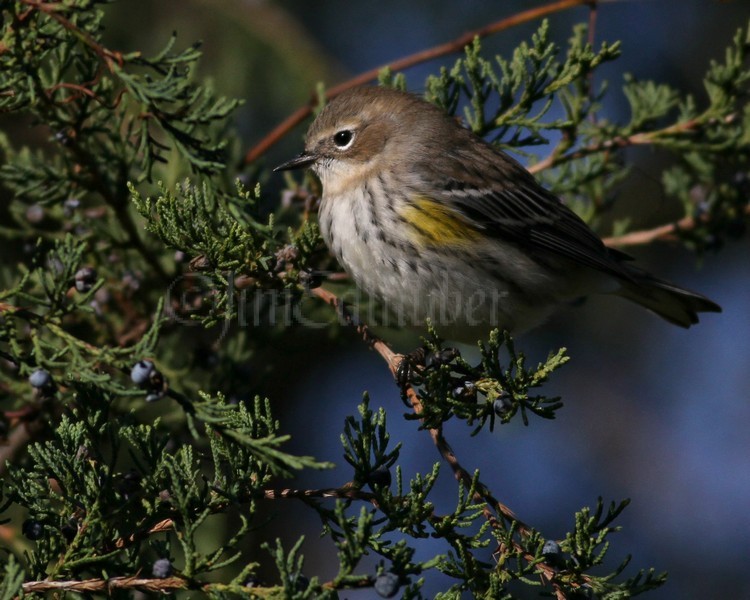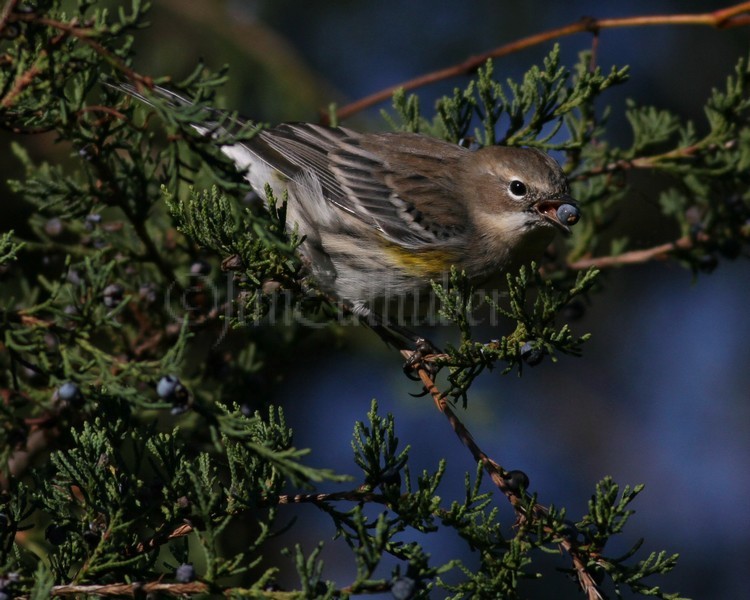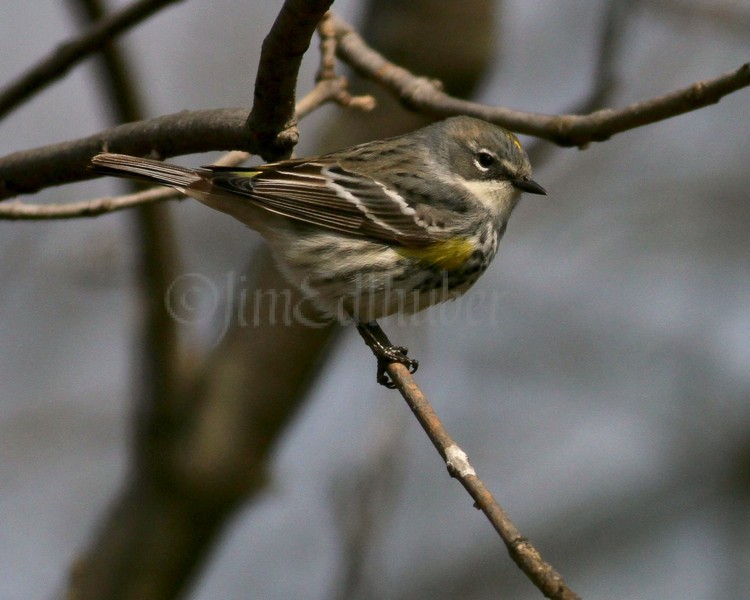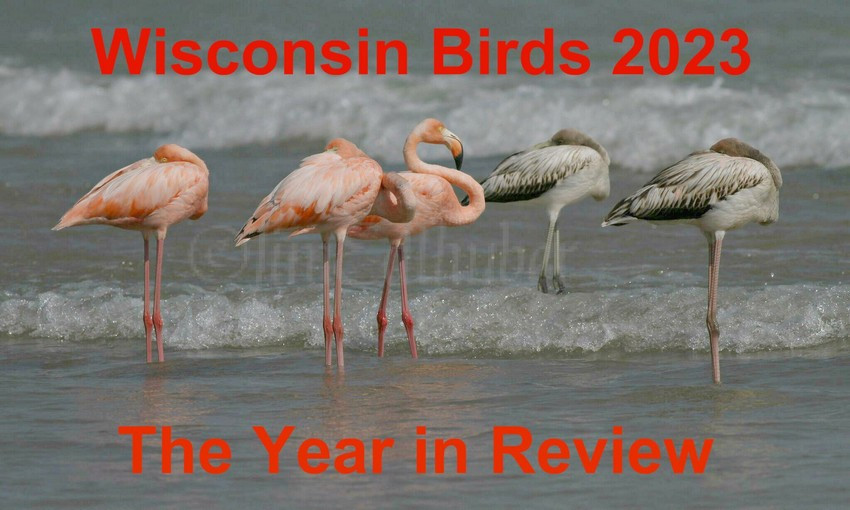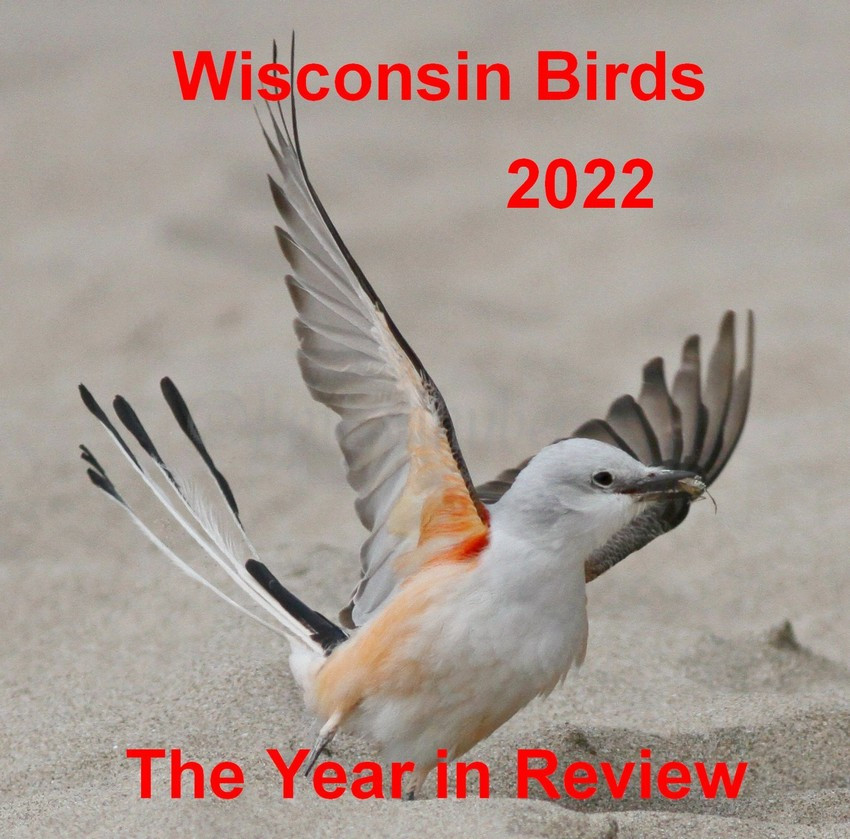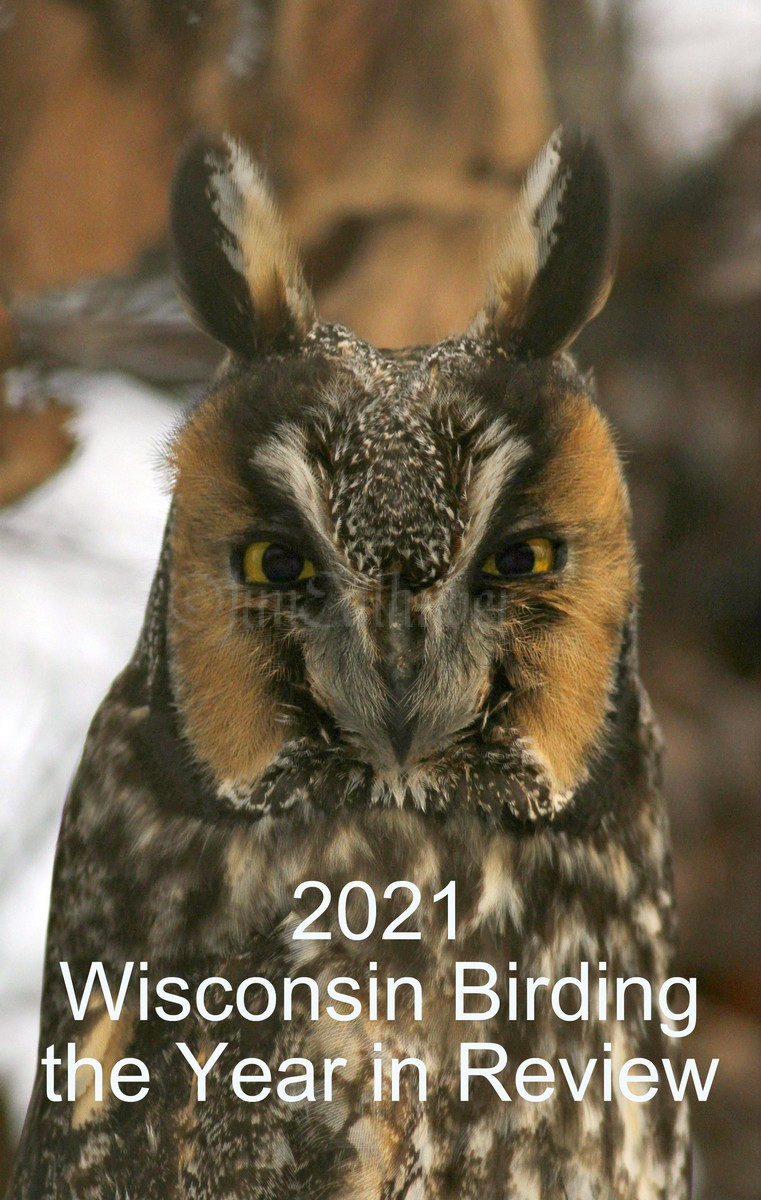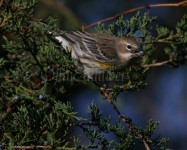
Yellow-rumped Warblers and Cedar Waxwings sharing the berries of a cedar tree in Waukesha County. Photographs taken October 19, 2013.
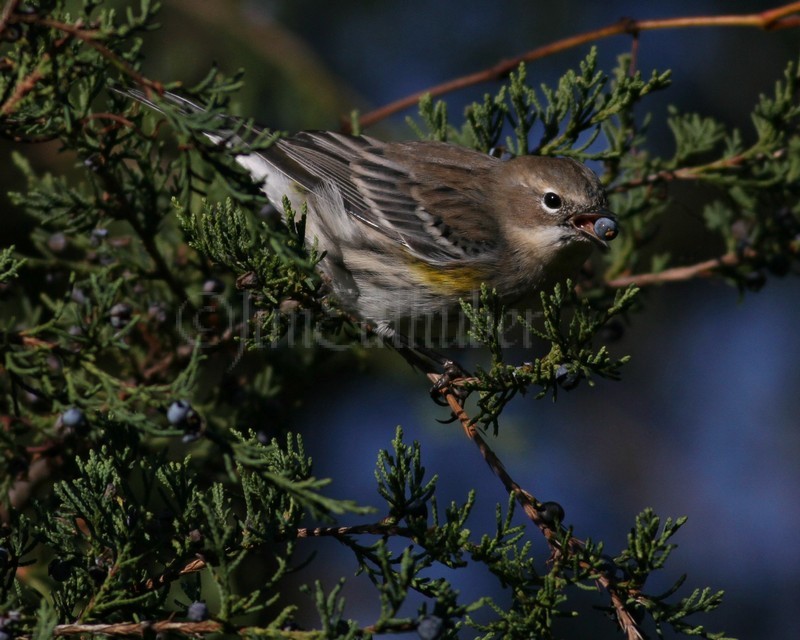
1st winter Yellow-rumped Warbler
Yellow-rumped Warbler
Binomial name: Setophaga coronata
Category: Wood-Warblers
Description: Both males and females have gray streaks, white on wings, and yellow rumps. Males have black streaking on slate blue backs while females also have brown steaks. Both have black bills and legs.
Size: 4.7″-5.9″ long, 7.5” – 9.4” wingspan
Weight: 0.39 oz. – 0.49 oz.
Habitat: Broadleaf and pine forests, mountains
Diet: Insects such as beetles, ants, aphids, grasshoppers, and spiders, as well as berries, fruits, and seeds
Nesting: The female builds the nest on a conifer branch out of grass, pine needles, twigs, and feathers. The male may help supply materials. The clutch size is 1 to 6 eggs, usually 3 or 4, with 1 to 2 broods laid per season. The female incubates the eggs for 12 or 13 days and the young can fledge after 10 to 14 days.
Notes: Four related species are often lumped together as the Yellow-rumped Warbler: Myrtle Warbler, Audobon’s Warbler, Mexican black-fronted Warbler, and Guatemalan Goldman’s Warbler.
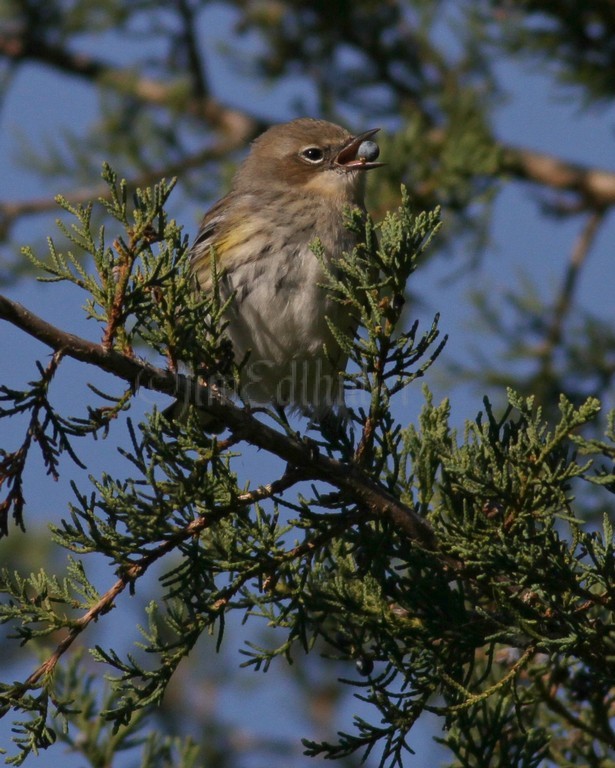
1st winter Yellow-rumped Warbler
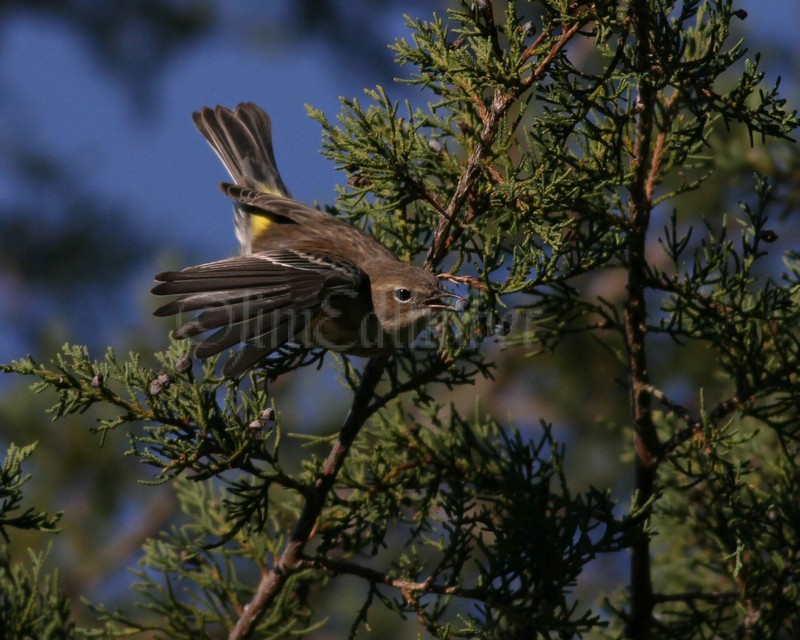
1st winter Yellow-rumped Warbler
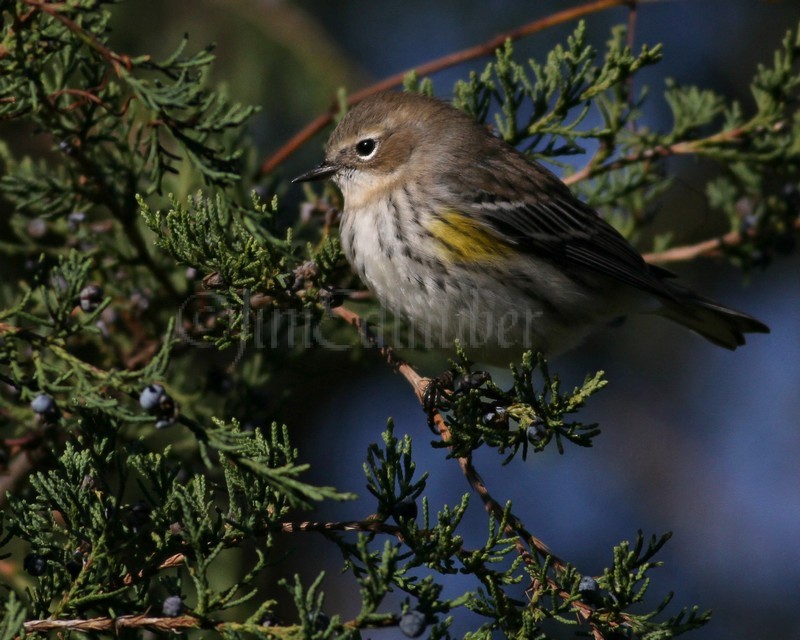
1st winter Yellow-rumped Warbler
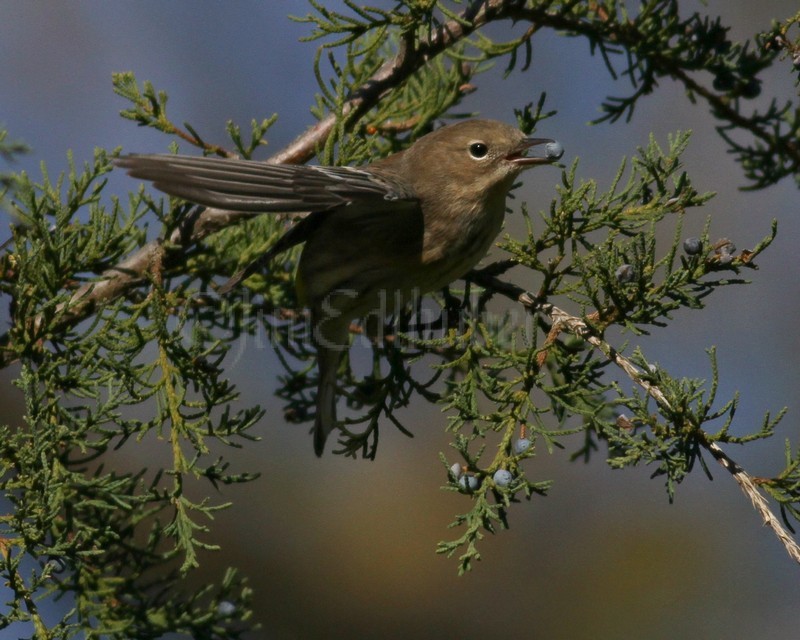
1st winter Yellow-rumped Warbler
Cedar Waxwing
Binomial name: Bombycilla cedrorum
Category: Waxwings
Description: Pale brown on and chest with gray wings and tail. Pale yellow belly with and a bright yellow tip on the tail. Black mask on the face outlined in white and red drops on wings. Black bill and legs.
Size: 5.5” – 6.7” long, 8.7” – 11.8” wingspan
Weight: 1.1 oz.
Habitat: Open woodlands, orchards, and residences, particularly locations with fruit and berry sources
Diet: Berries, fruits, insects, and cedar cones
Nesting: The courtship ritual involves the male doing a “hopping” dance. If a female is interested, she’ll “hop” back. Mating couples will pass small objects between each other such as flowers or food and may rub bills affectionately. Females handle most of the nest-building using twigs, grass, feathers, and animal hair. 4 to 6 eggs will be laid per clutch with 1 to 2 broods per season, and the female incubates them for 11 to 13 days. Both parents will care for the young.
Notes: Unlike most birds, the Cedar Waxwing specializes in eating fruit. Instead of separating and regurgitating seeds from fruit and berries as most birds do, Cedar Waxwings will pass them. Occasionally if fruit has become overripe, Cedar Waxwings may ingest too much and become intoxicated or even die.
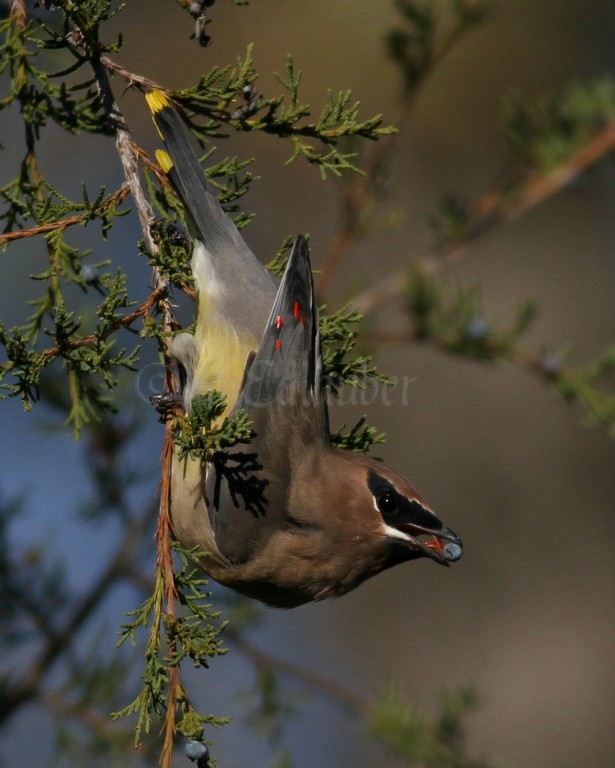
Cedar Waxwing
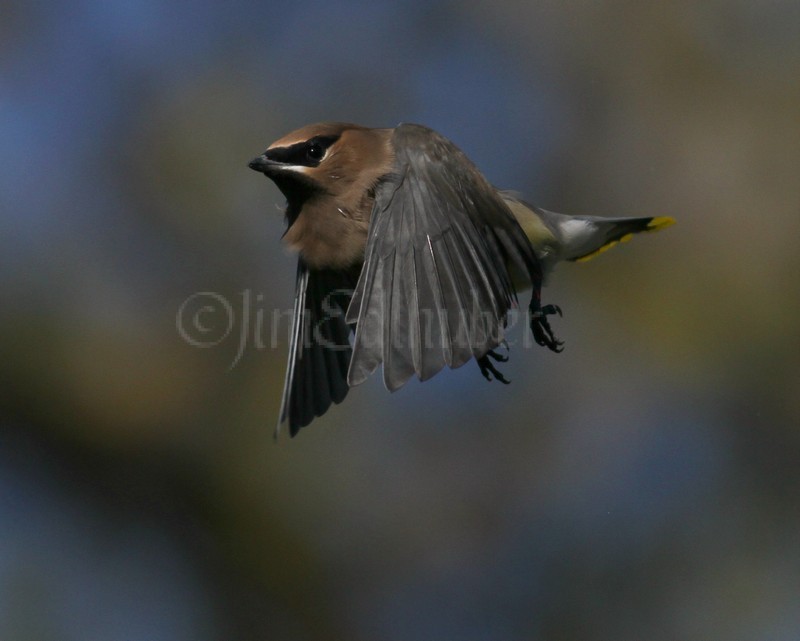
Cedar Waxwing
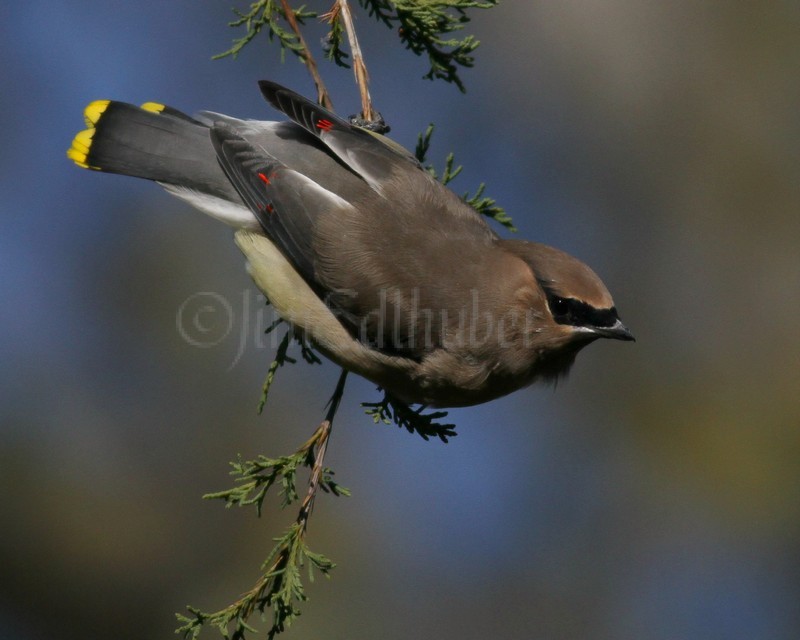
Cedar Waxwing
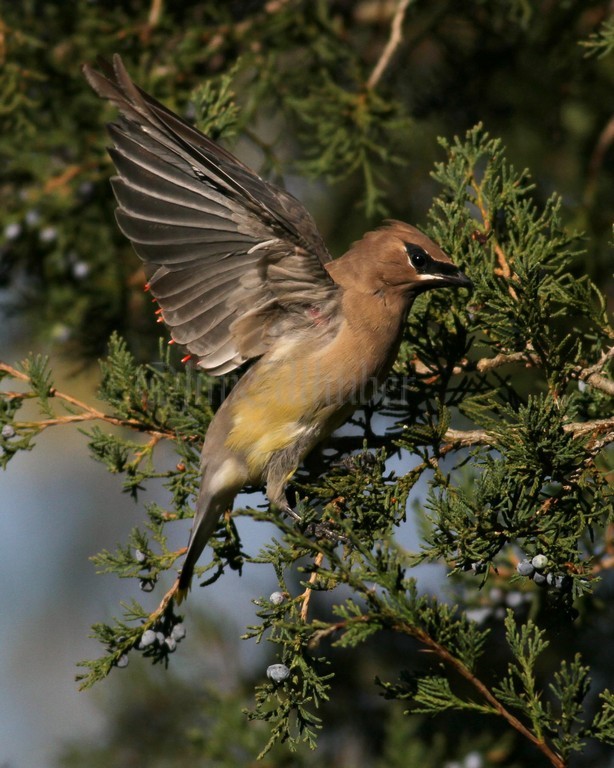
Cedar Waxwing
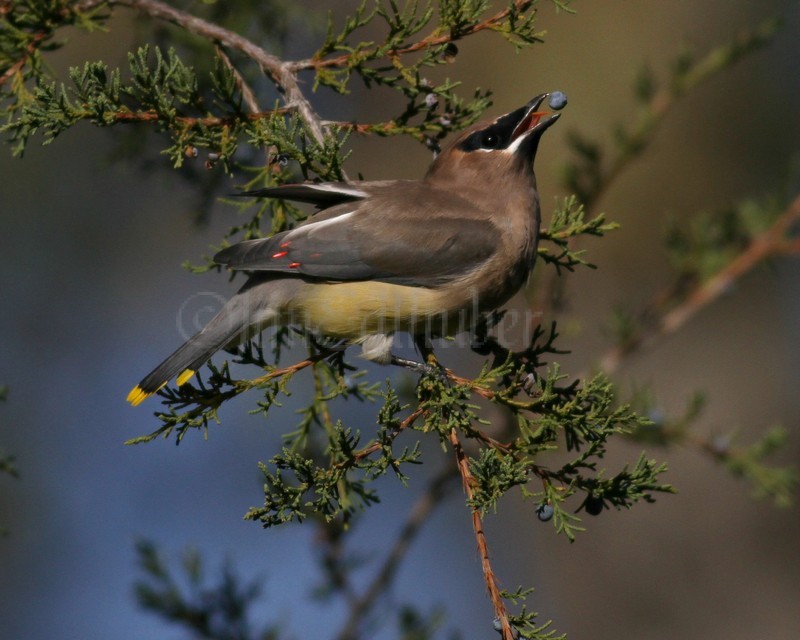
Cedar Waxwing
To see the gallery of images, please click here.
